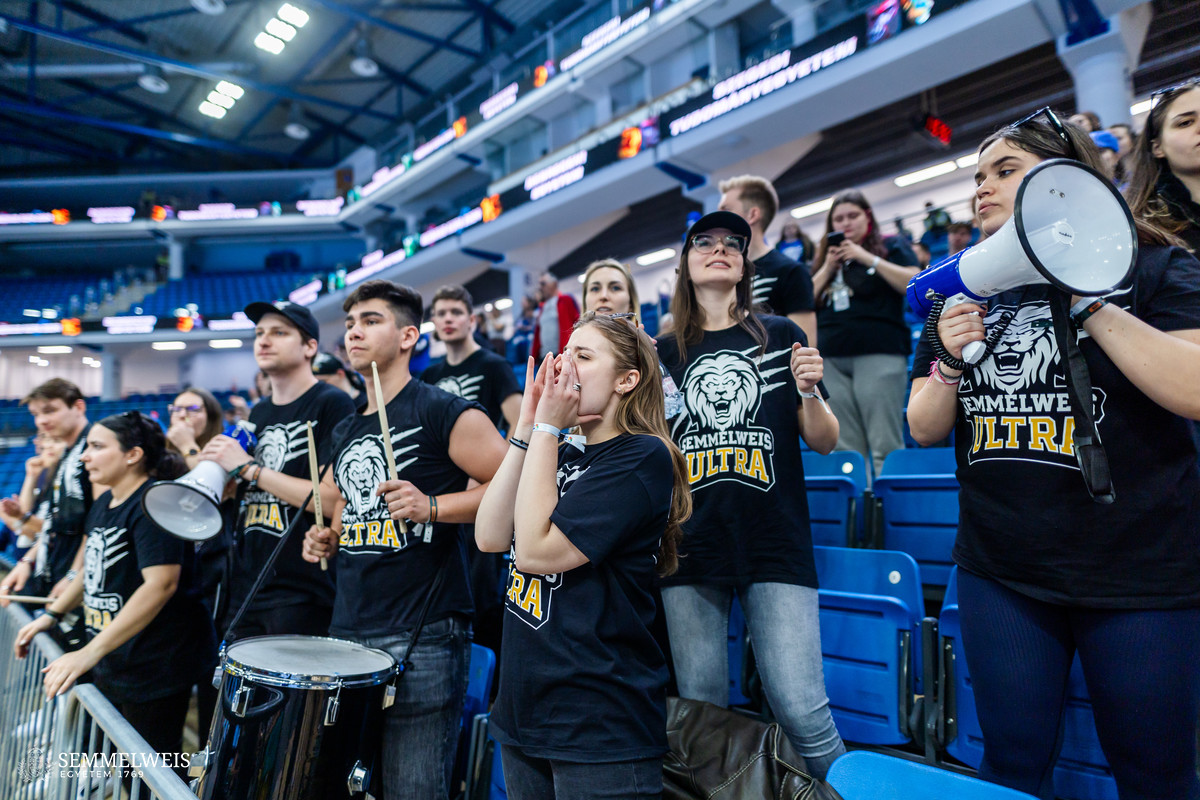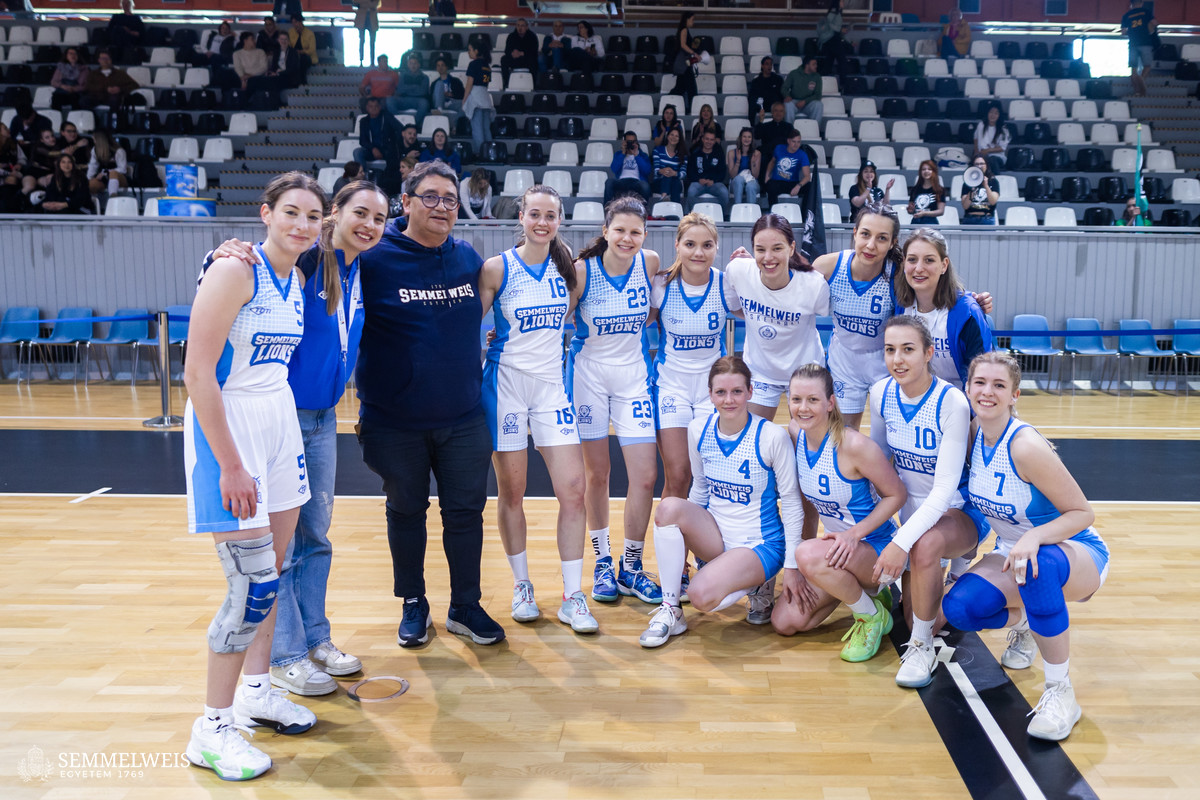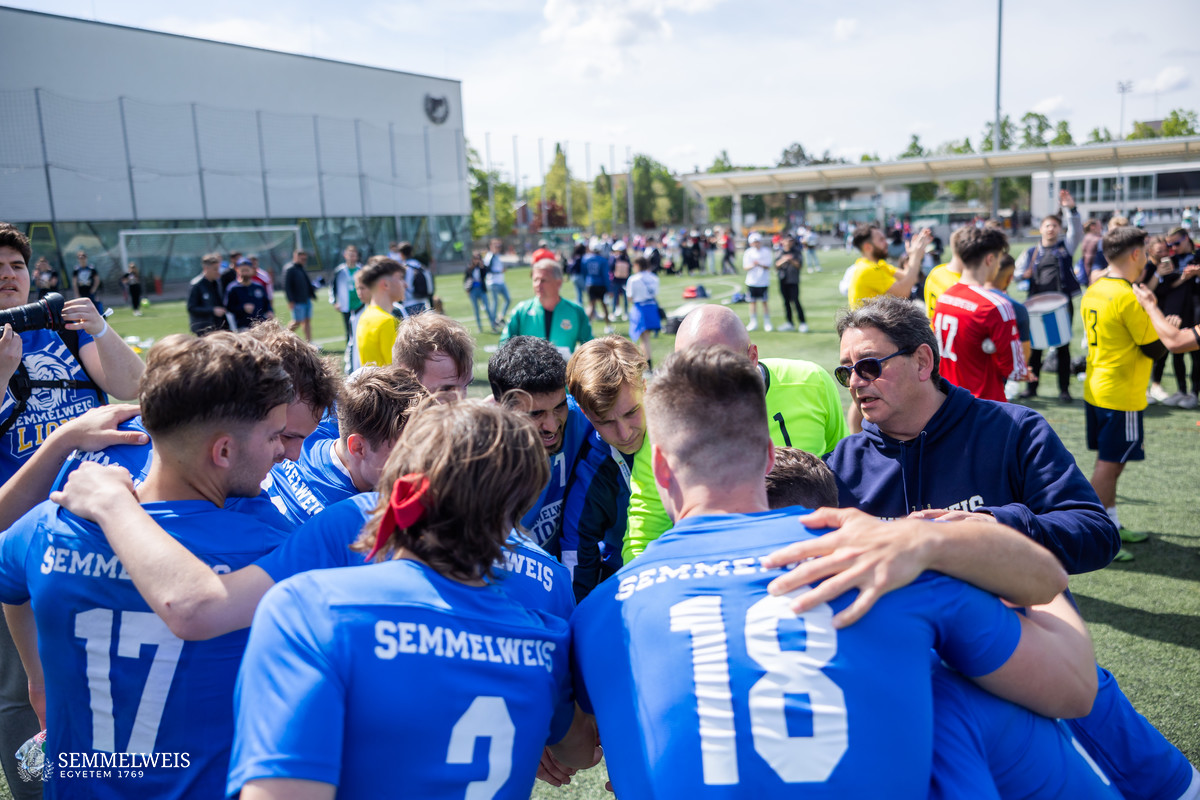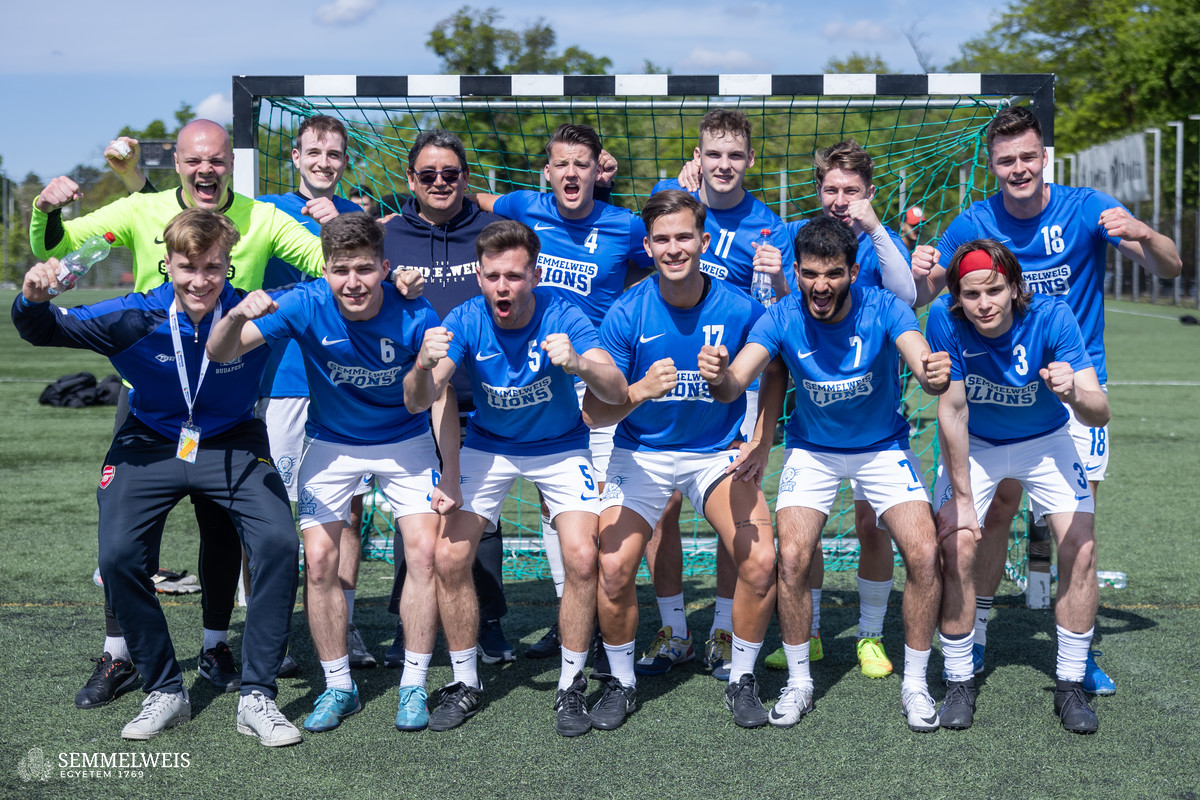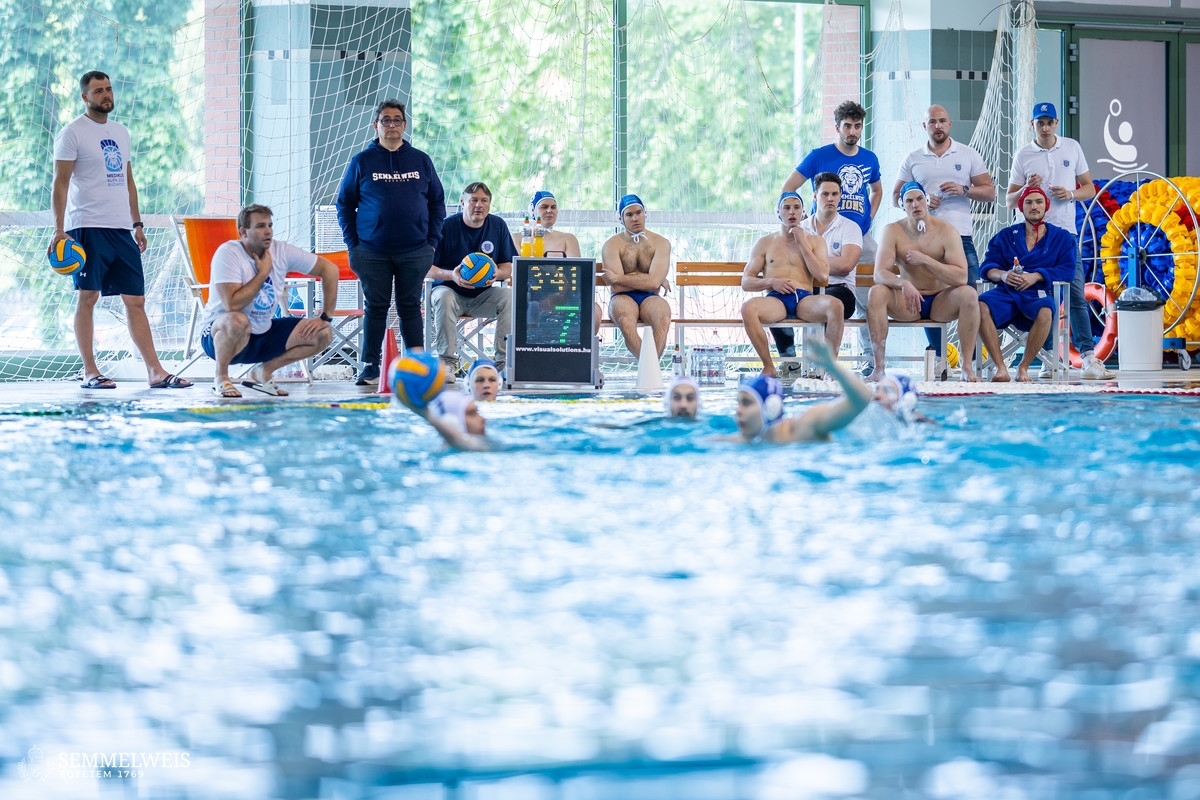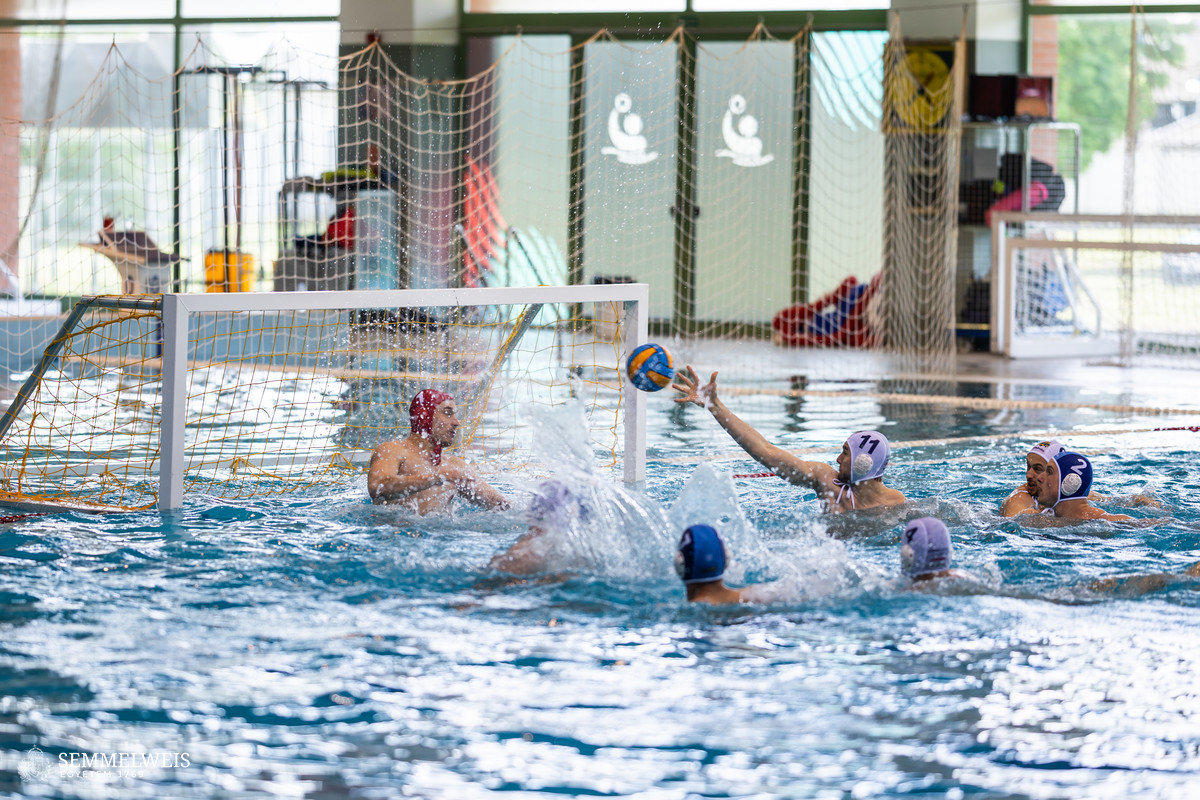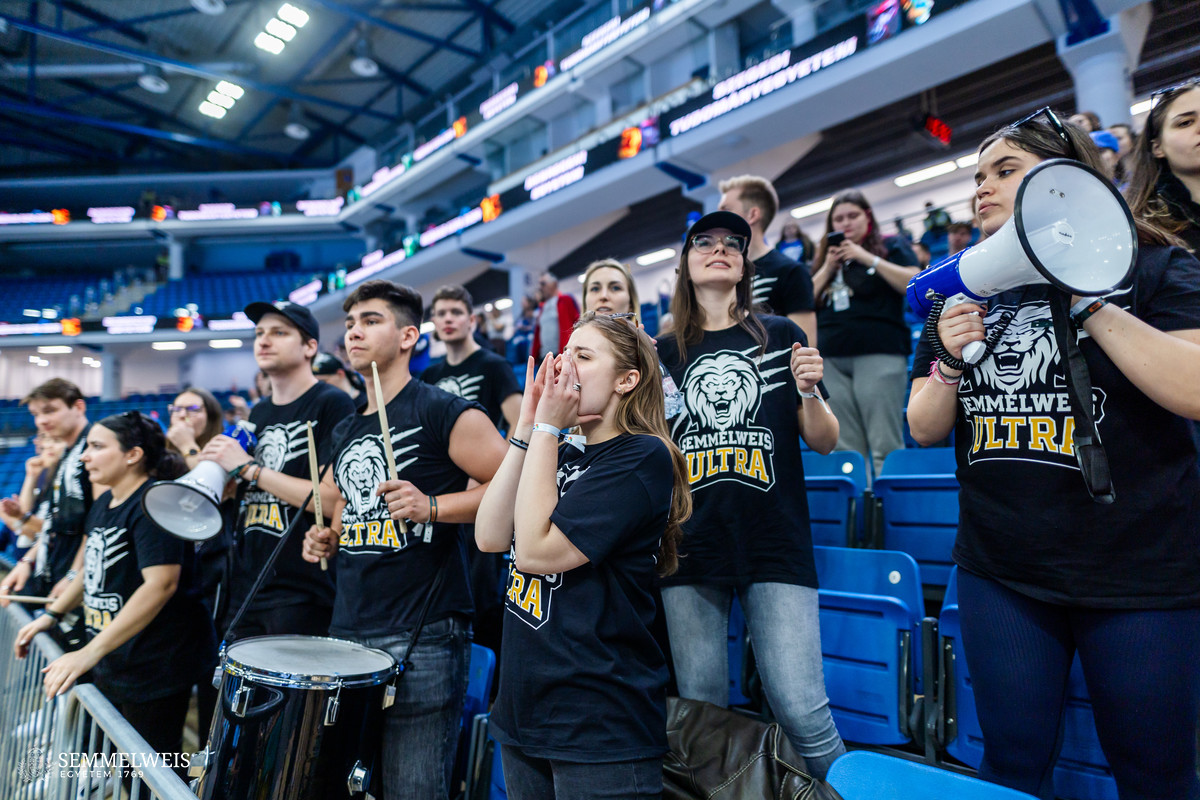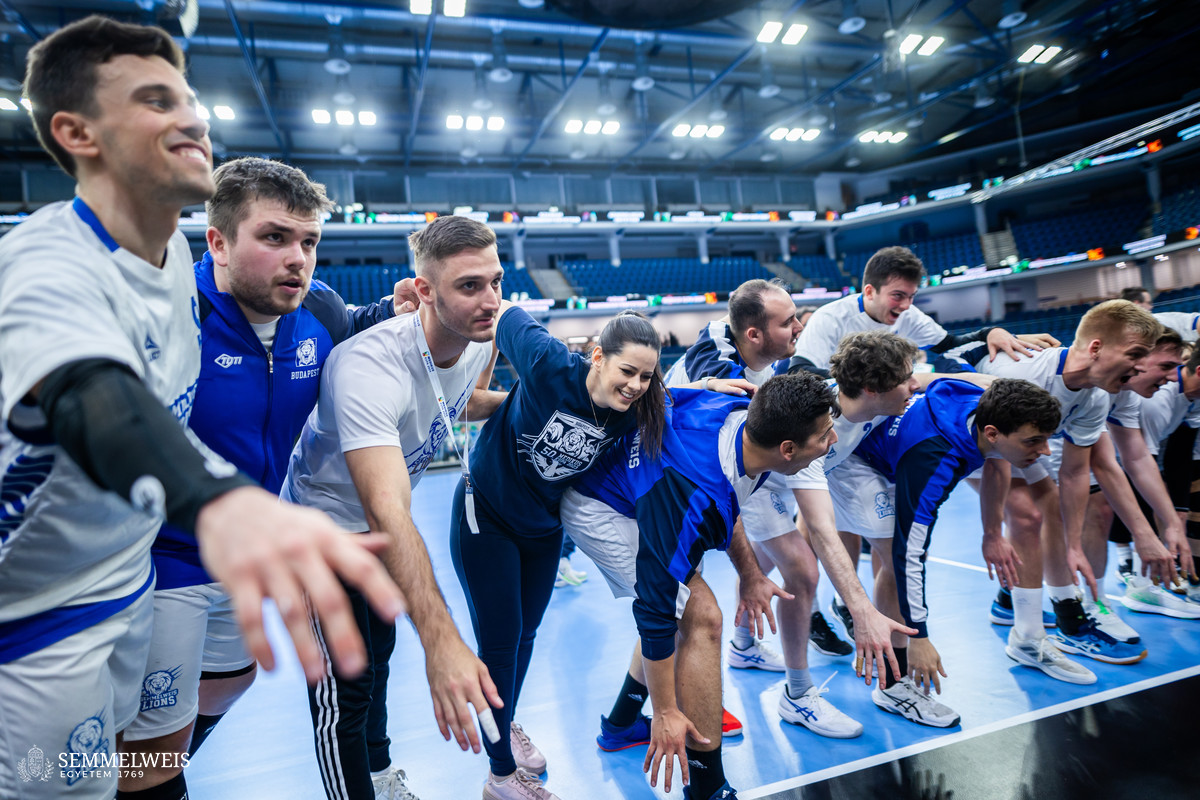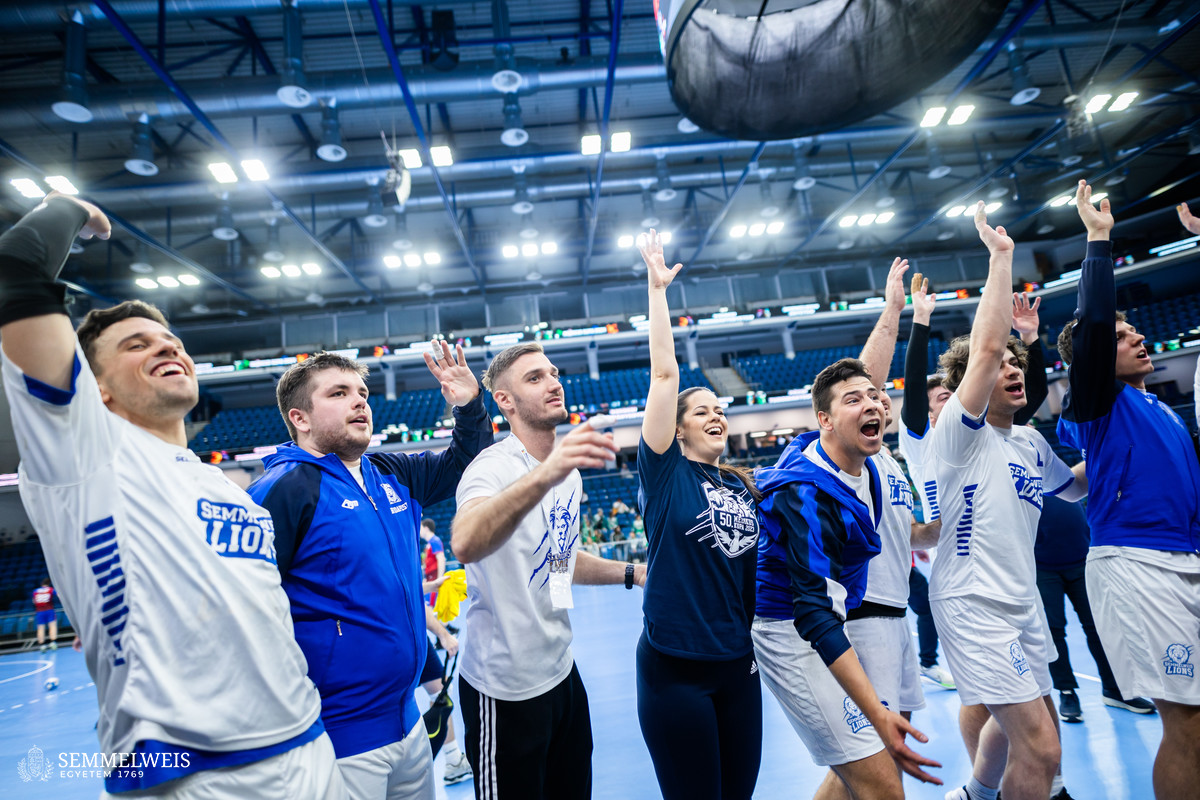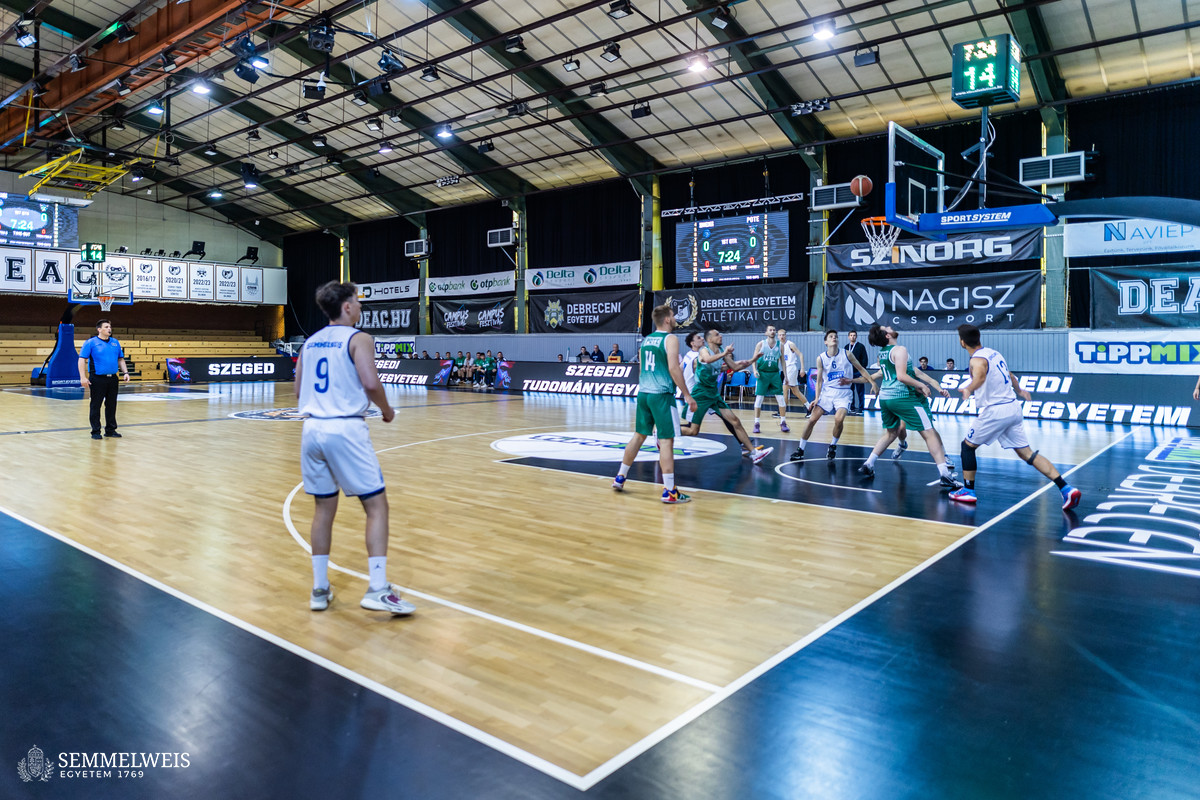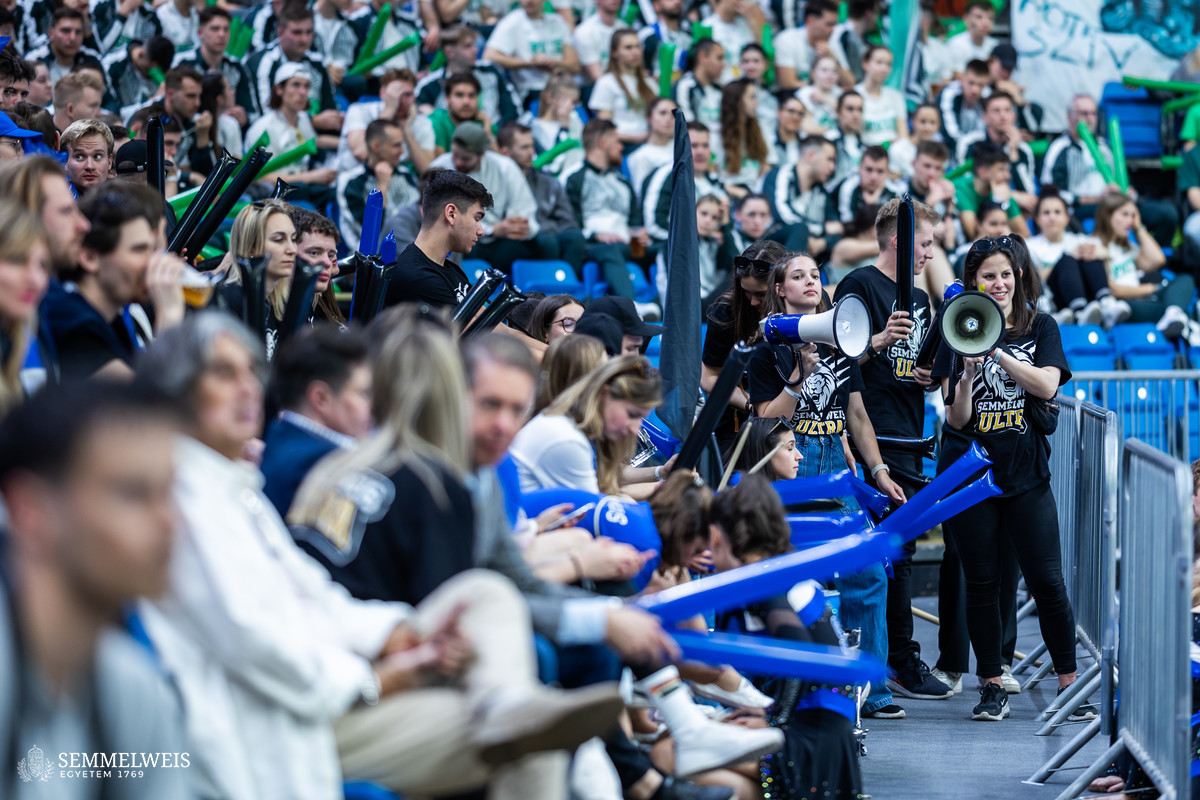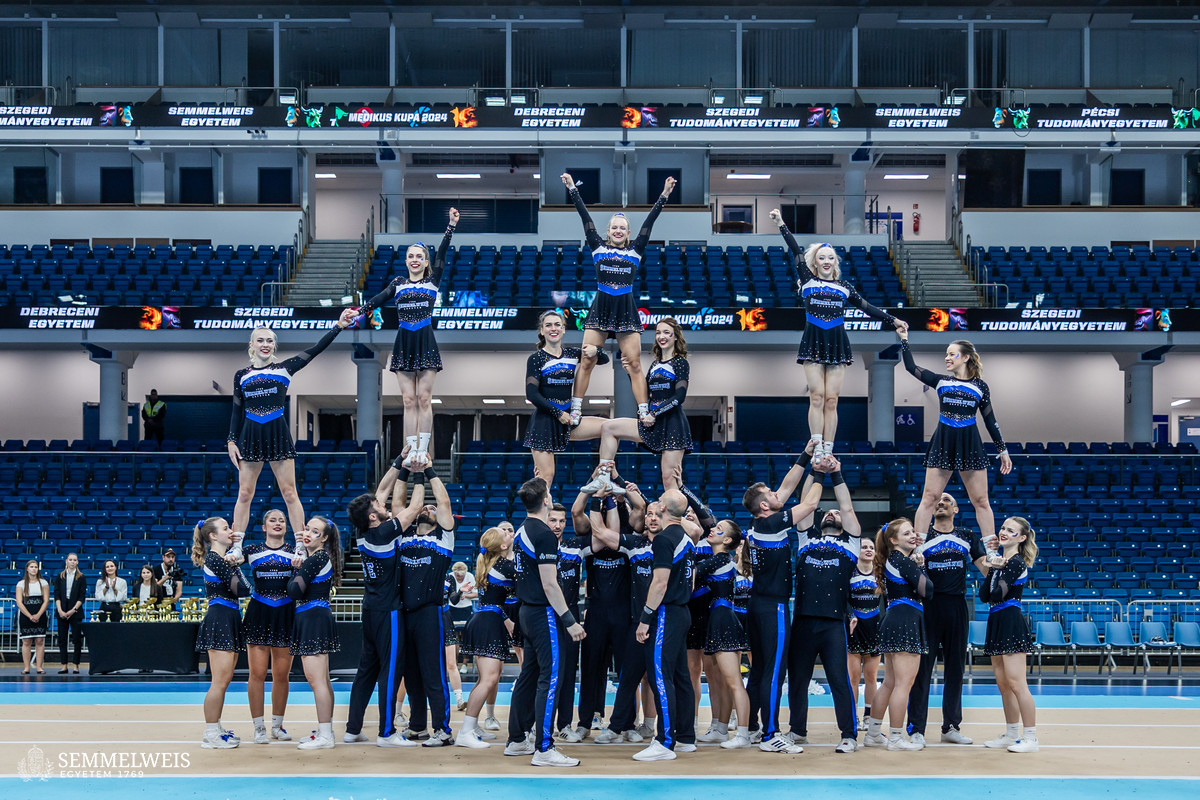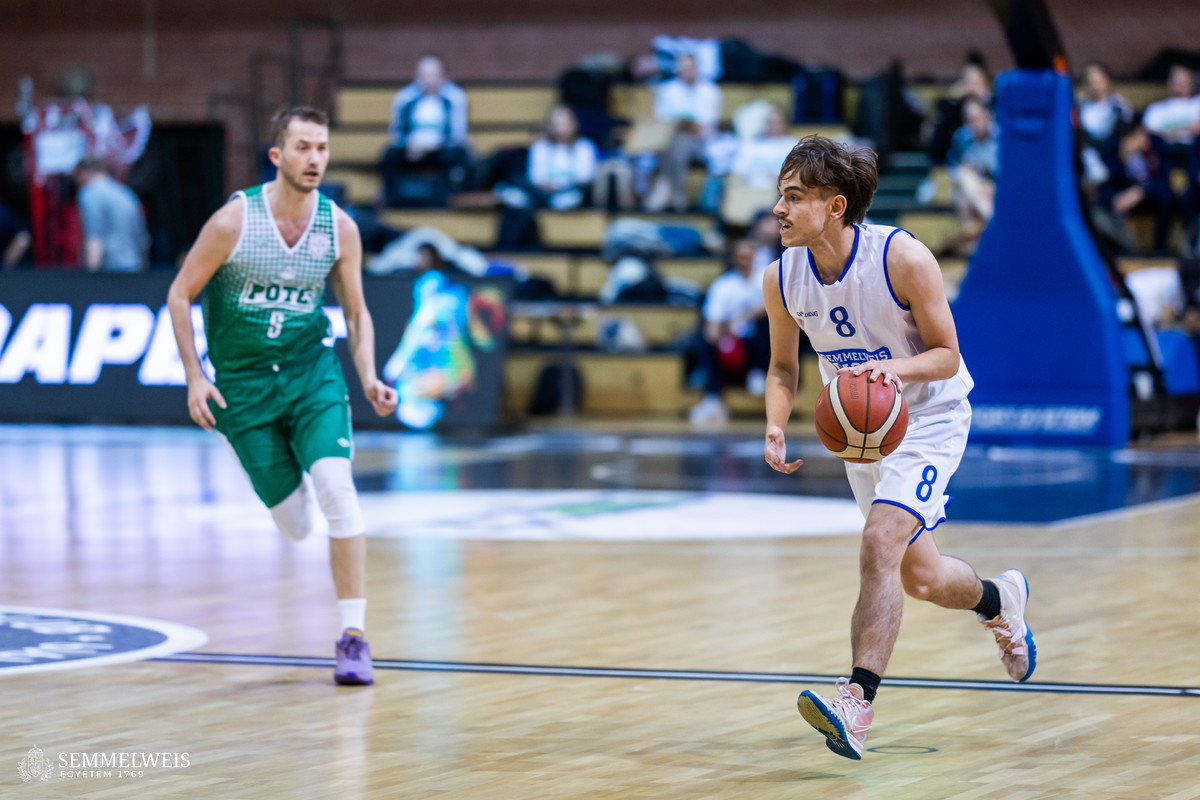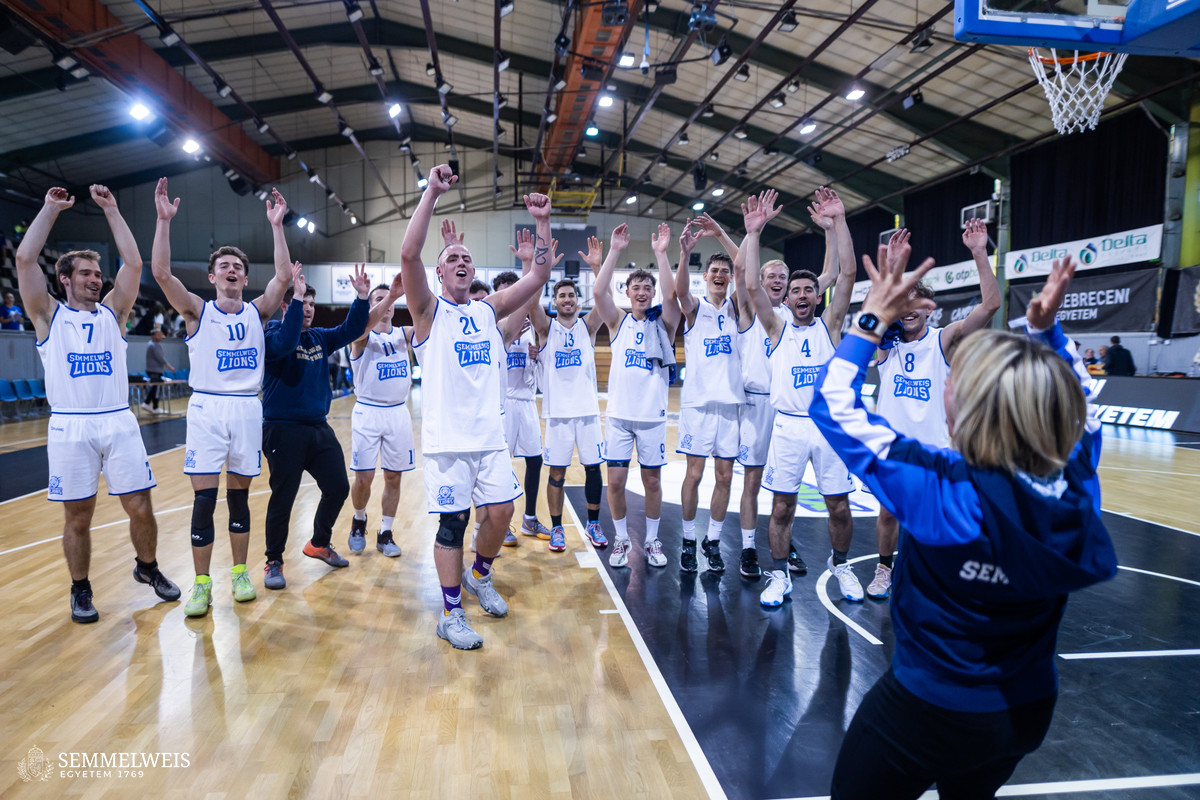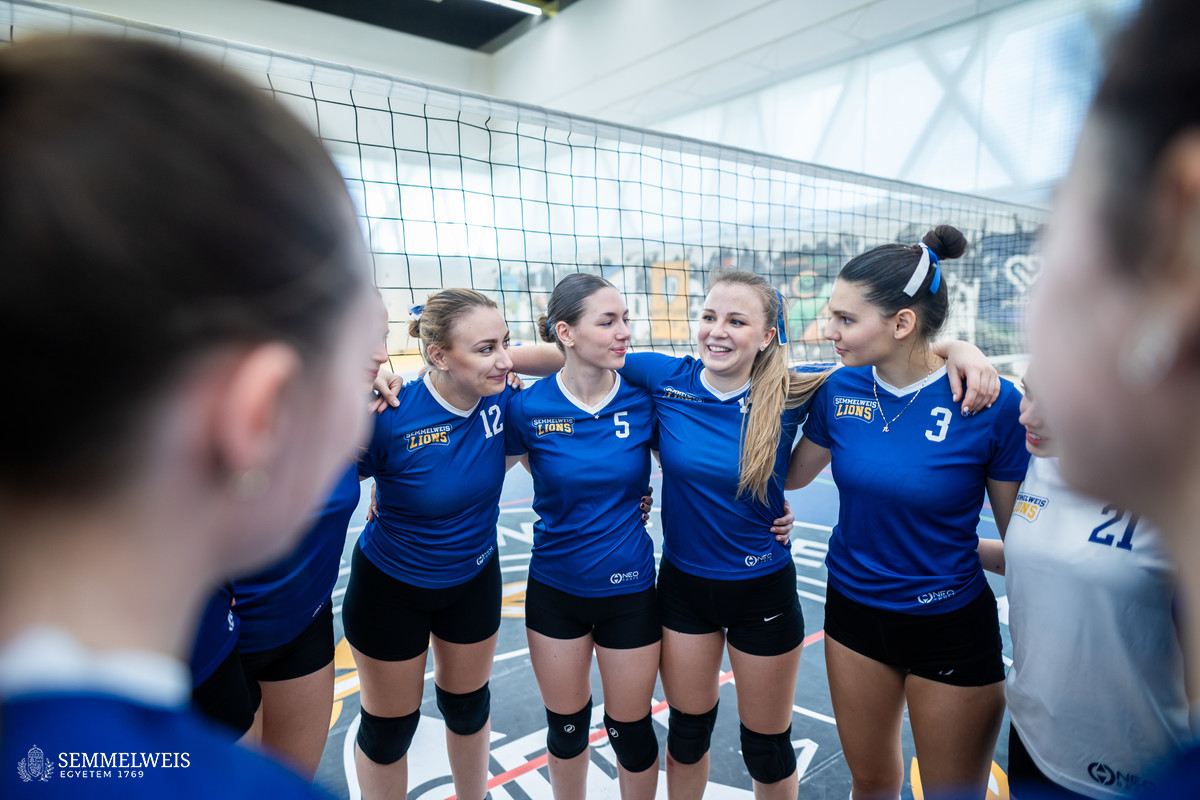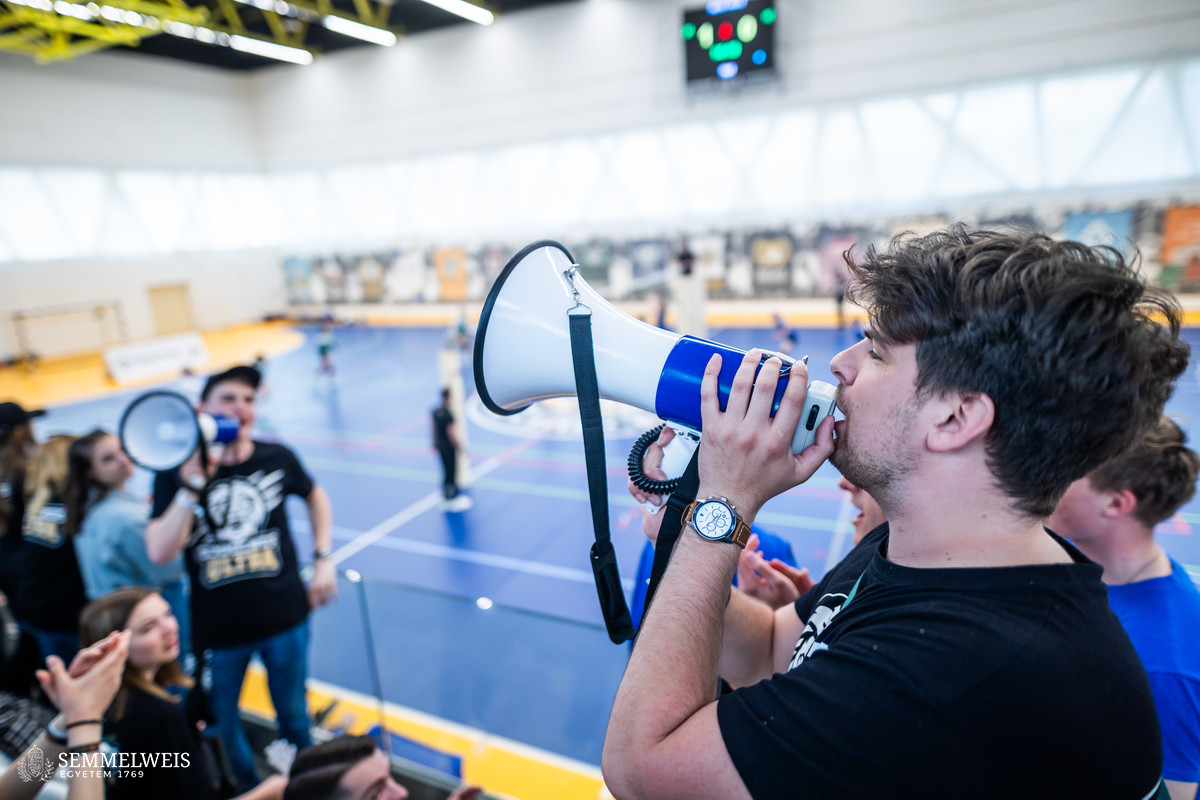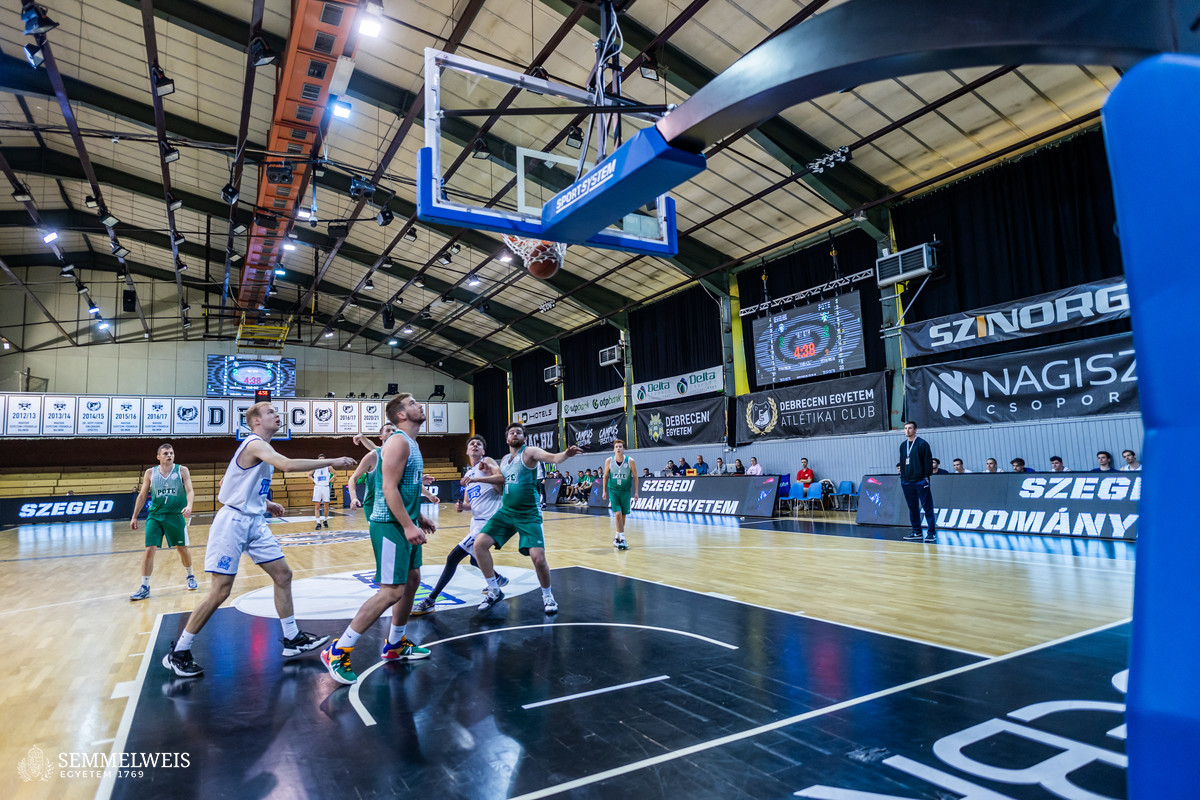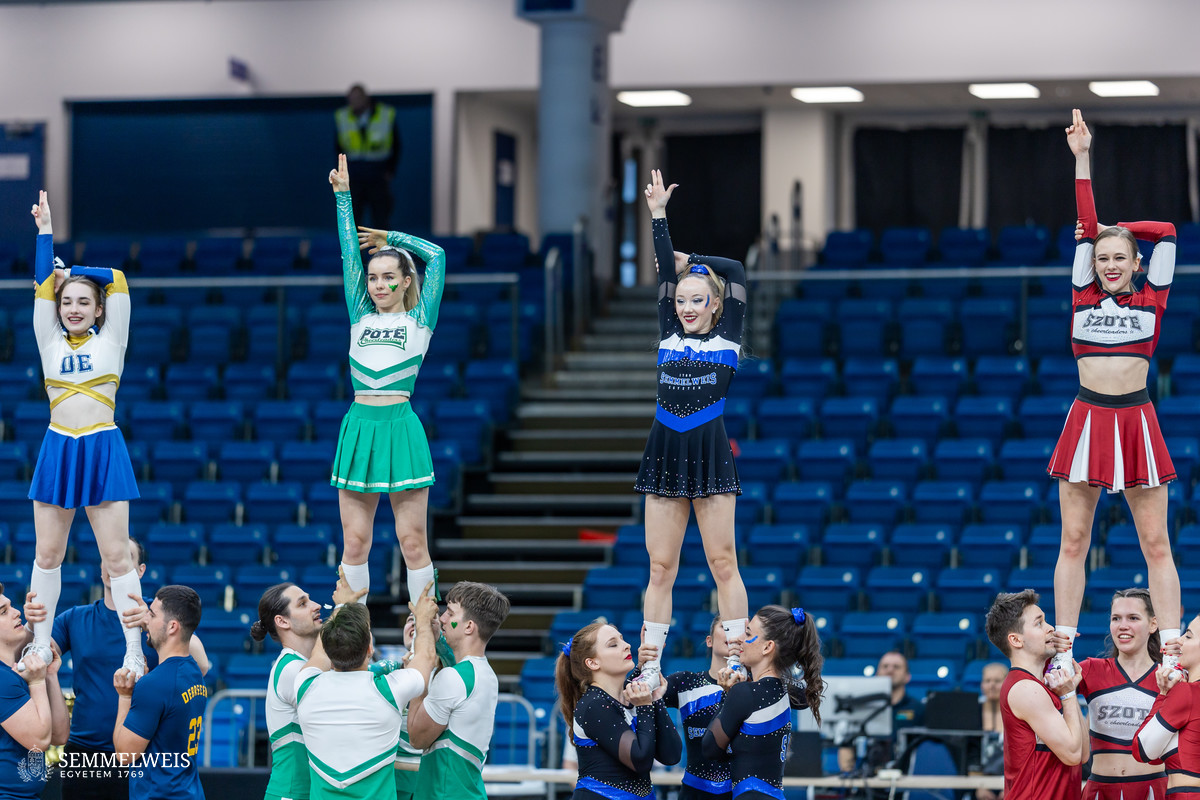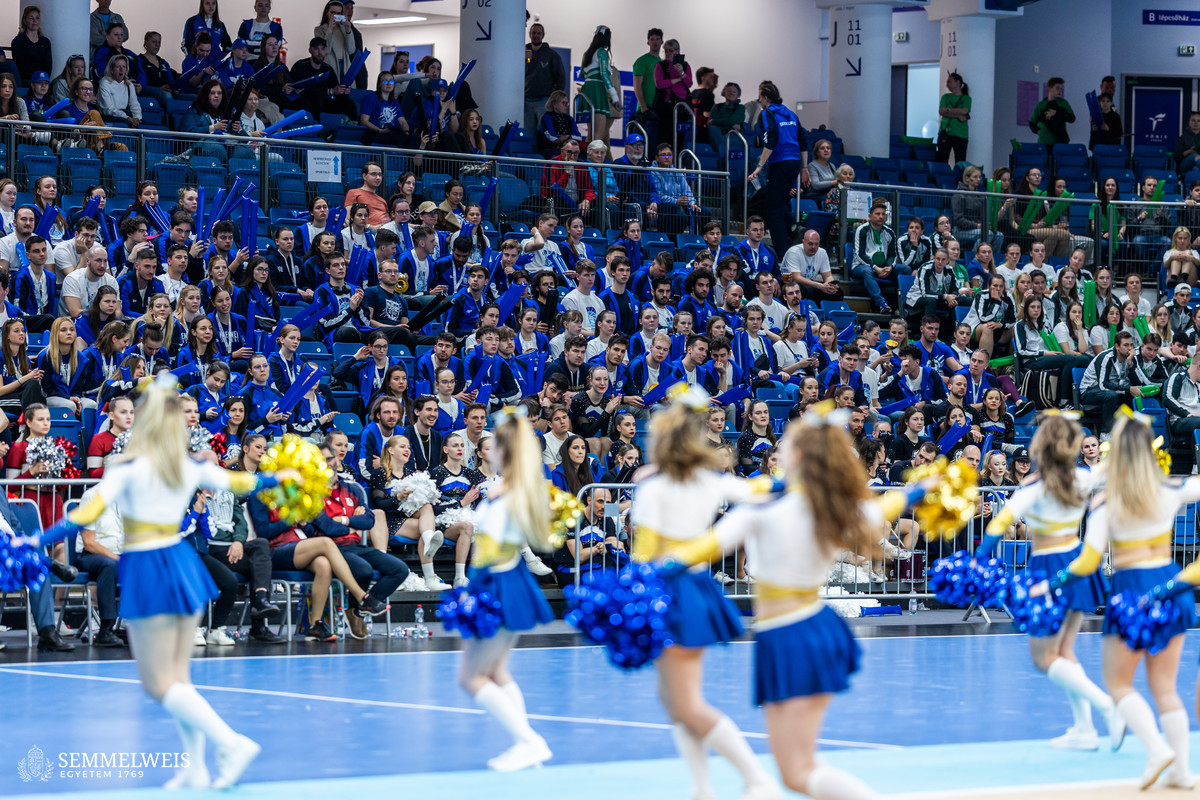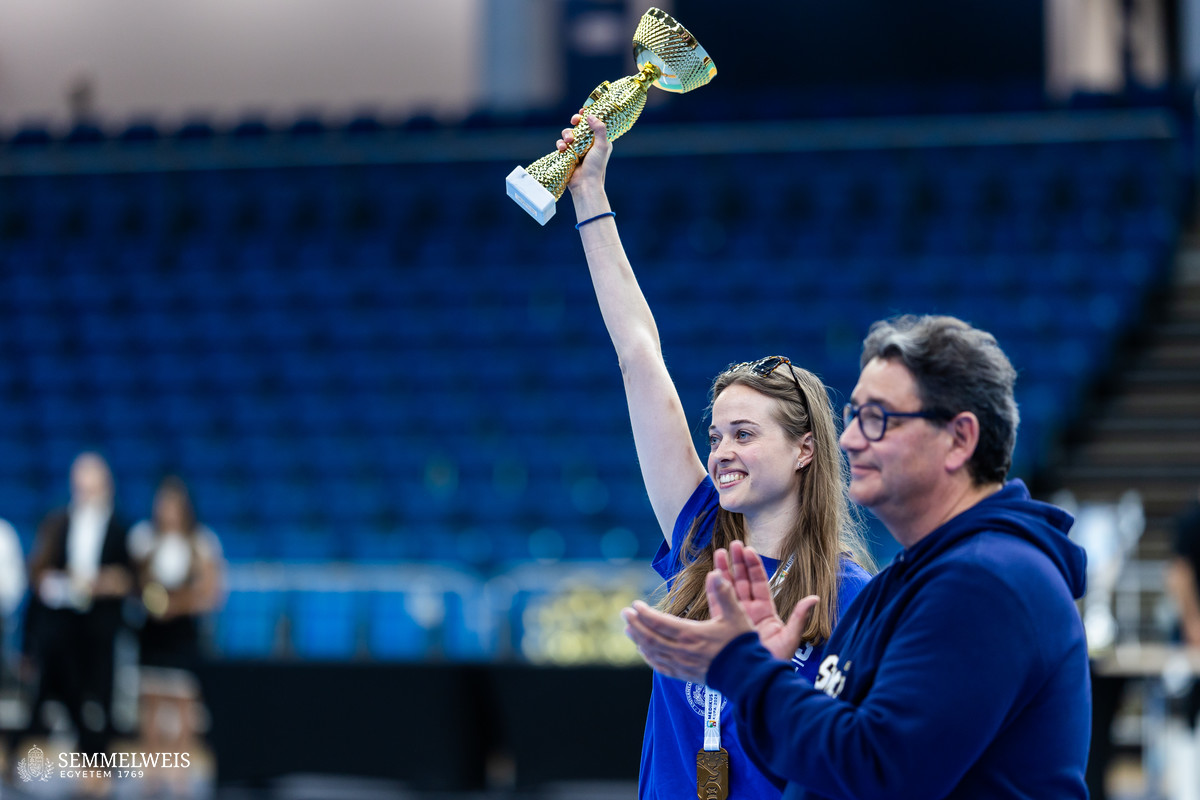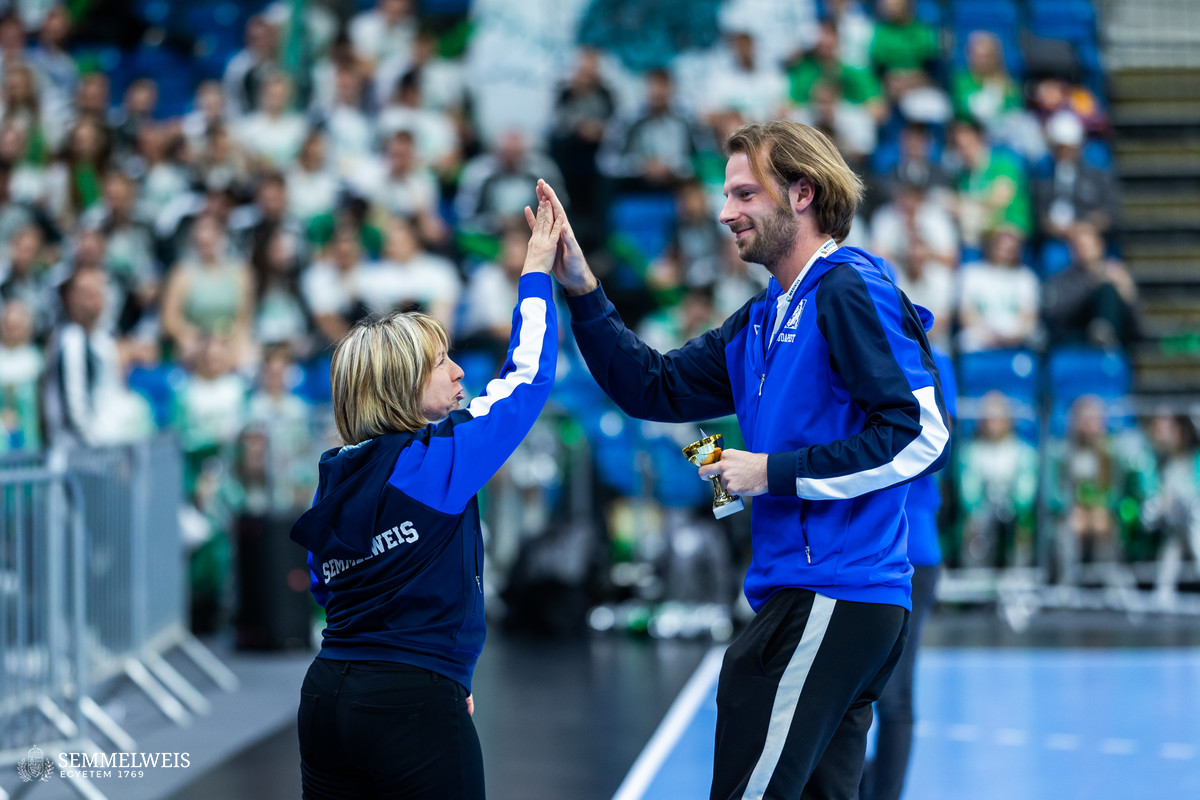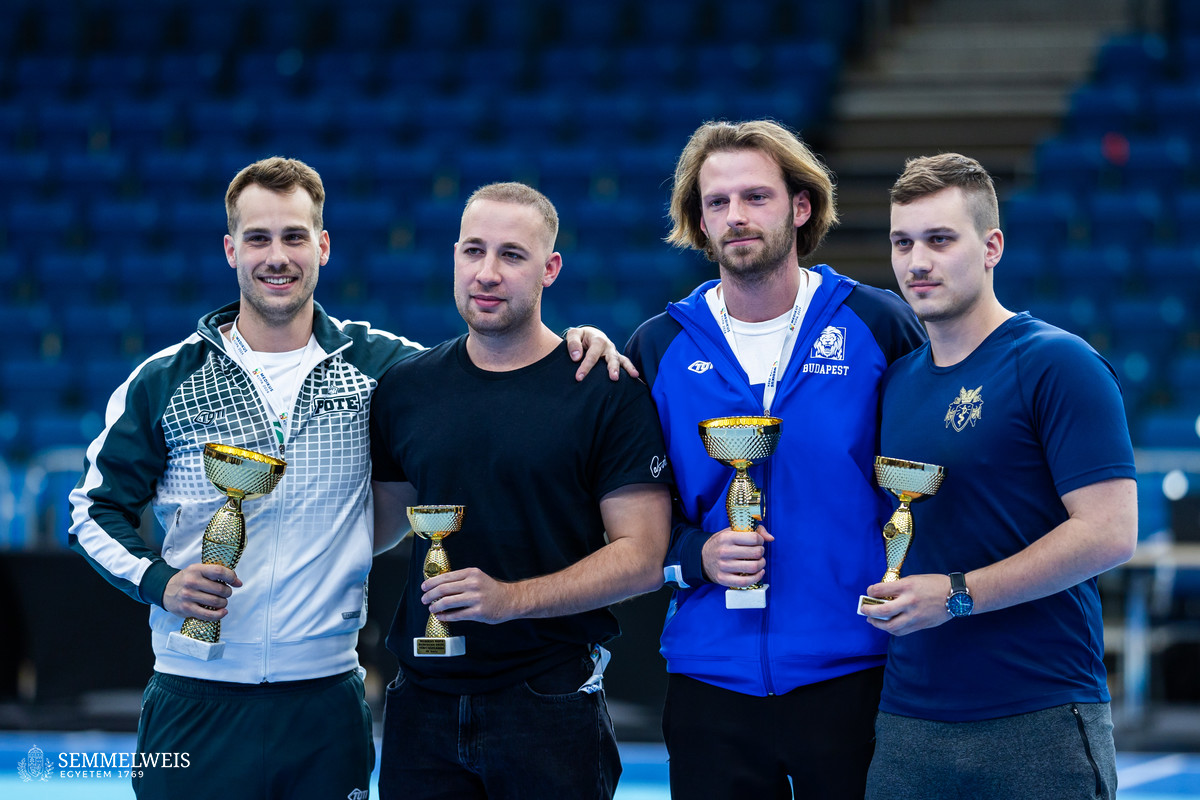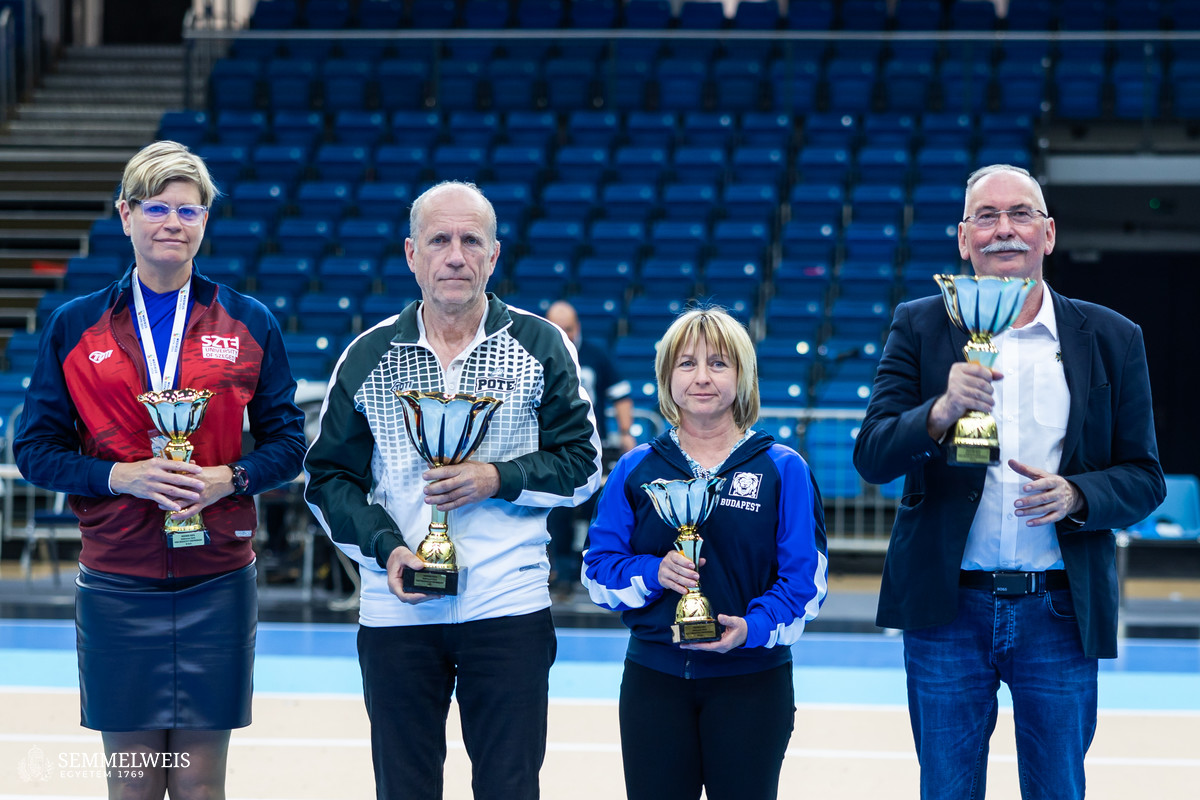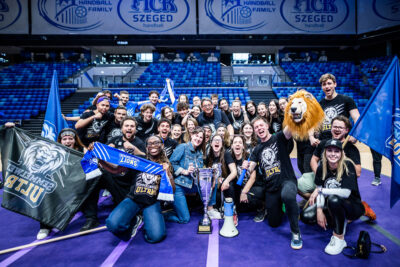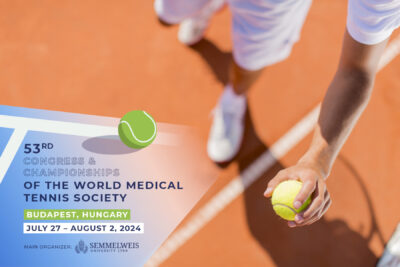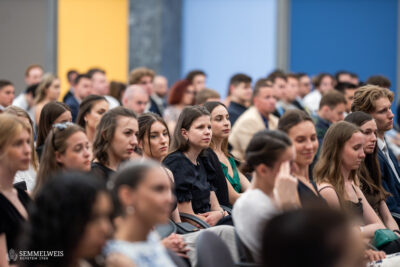“Two years ago, in Pécs, we won the Medic’s Cup with a three-pointer. Last year, in Budapest, we won the all-around by a wide margin. The opponents had been preparing for a year to fight back, and I have to admit that the teams from the universities outside Budapest have improved a lot,” said Rector Dr. Béla Merkely – who had personally cheered on the players from courtside and poolside all along – in his assessment of the competition. Almost all the matches were close, but unfortunately small details and injuries decided the games, sometimes not to our advantage, he added. The task is to win the cup back next year, and we will be working on that, said the rector, adding that the entrance examination figures already showed that many good athletes would be coming to the university, so there would be no shortage of young talent.
Kornélia Várszegi, Director of the Physical Education and Sports Center, said that Semmelweis University had won third place in the men’s and second place in the women’s all-around competition. She stressed that
the teams from Debrecen and Pécs scored 24 points each, while Semmelweis was only two points behind them, winning the bronze medal.
The women’s basketball team won the competition, but in most sports, Semmelweis finished second or third due to the goal difference and the fact that the teams beat each other in the round robin in a cyclic manner, she added. One of the lessons is that it is not enough to win by a small goal difference and that you should never let a win slip away, she said, emphasizing that all 140 players had fought with determination, just as the fans had also supported the team enthusiastically throughout. Kornélia Várszegi stressed that Semmelweis had also won first place in women’s water polo, although this did not yet count in the points competition this year. As a good example of the cooperation between the four medical universities, she mentioned that the cheerleading teams had put together a joint choreography in Budapest in March, which they then performed together in Debrecen.
As Kornélia Várszegi told our website, this year 20 international students joined the Semmelweis team: two players in women’s and four in men’s handball, one in women’s water polo, seven in men’s volleyball, three in women’s and one in men’s soccer, and two in men’s basketball.
Muhammad Soban, Deputy Head of Committee of the International Students’ Committee at the Students’ Union, and Event Coordinator Reem Aladin were pleased to notice this year’s increased interest in the Medic’s Cup, witnessed among international players and supporters alike. “I did interviews with many players, and when I came back to Budapest, everyone was asking me how they could join the teams, as they didn’t expect the event to be that good. So, our plan for next year is to make Medic’s Cup even more international,” Muhammad Soban said, sharing his first-hand experiences.
Csenge Gecsey, President of the Students’ Union (HÖK), pointed out that the crowd of 600 supporters had created an extraordinary atmosphere at the games, in which the cheerleaders and the 50-strong ultra team had played a big role. She added that the leaders of the university – Dr. Béla Merkely, Rector; Dr. Lívia Pavlik, Chancellor; Dr. Éva Szabó Feketéné, Vice-Rector for Strategy and Development; Dr. Péter Hermann, Vice-Rector for Educational Affairs; Dr. Gabriella Dörnyei Bednárikné, Dean of the Faculty of Health Sciences; Dr. Andrea Zsebe, Dean of the András Pető Faculty; Dr. Péter Nyirády, Director of the Department of Urology – were also on the spot to cheer on the teams, which provided them with extra motivation. It was a great experience that the supporters arrived in Debrecen by special train and were able to leave their common accommodation to cheer on the teams after having partied together, which further strengthened the Semmelweis community, said the president of HÖK, adding that HÖK and the supporters would do their best to make sure that Semmelweis achieves better results next year.
Péter Pogrányi
Translation: Dr. Balázs Csizmadia
Photos by Bálint Barta – Semmelweis University
